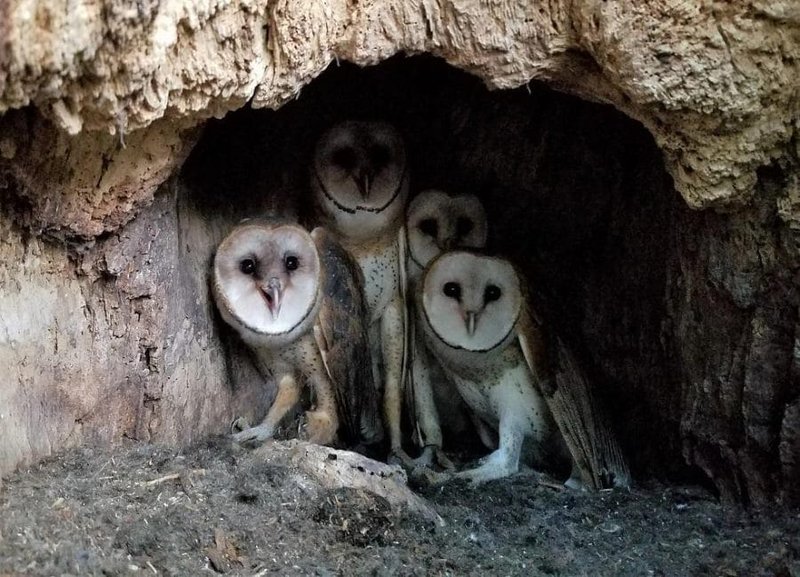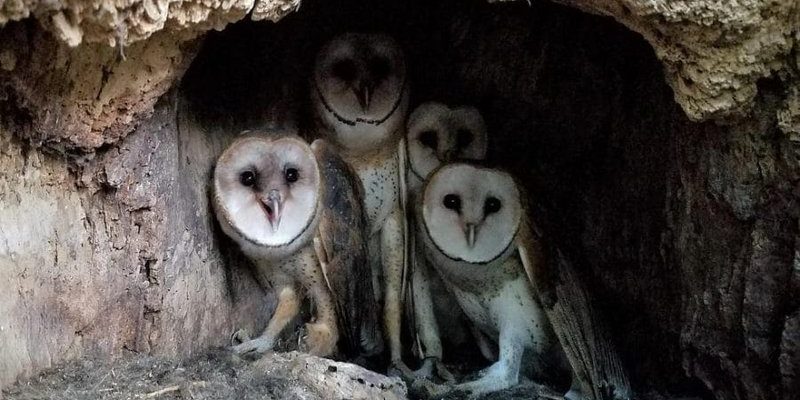
While many people associate barn owls with rural settings, their habitats are surprisingly diverse. From the sweeping grasslands of North America to the dense woodlands of Europe and even the open fields of Africa, these owls can be found in a variety of environments. So, grab a cup of coffee, and let’s explore the many homes of the barn owl together!
Understanding the Barn Owl’s Habitat
To start, it’s important to know what kind of places barn owls thrive in. They’re pretty adaptable and often prefer areas that provide both plenty of space for hunting and safe roosting spots. Think of them like a cozy café— they need the right ambiance to feel at home!
Barn owls are typically found in open fields, grasslands, agricultural areas, and even some urban settings. They like places where they can easily spot their prey, which mainly includes rodents. These owls also enjoy nesting in old barns, tree cavities, and other structures that offer a safe haven.
While they’re adaptable, barn owls do have specific needs. They prefer regions with adequate hunting grounds and minimal disturbances, which allows them to thrive without too much human interference. So, if you’re on a mission to spot one, look for sprawling fields or even abandoned structures where these owls might be hiding.
North America: A Barn Owl Haven
In North America, barn owls are quite widespread, especially in the eastern parts of the United States. They’re not the most common owl you’ll encounter, but they certainly make their presence known, especially at dusk or dawn when they’re out hunting.
Fields, pastures, and even agricultural lands are perfect spots to look for them. California’s central valley is a particularly rich habitat, where these owls can often be seen gliding over crops. When you think about it, they have a great working relationship with farmers since they help control rodent populations.
However, it’s essential to remember that they need open spaces to hunt, so areas with too much urban development can be less favorable for them. When you head out to search for barn owls, consider visiting rural farmlands or wildlife sanctuaries, where they can thrive and hunt freely.
Europe: The Barn Owl’s Old World Roots
In Europe, barn owls are present across the continent, with a strong preference for the western and southern regions. Countries like England, France, and Spain are excellent places to spot these owls. If you’ve ever been to the English countryside, you might have caught a glimpse of a barn owl soaring over a field, making them a delightful part of the rural landscape.
Historically, barn owls have been tied to folklore and agricultural traditions in Europe. Farmers often value them for their ability to keep pest populations in check. You might be surprised to learn that these owls can consume up to 1,000 rodents in a year! So, if you’re a farmer, having a barn owl nearby could feel like having a little guardian angel on your side.
Moreover, they typically nest in old buildings, tree cavities, and even cliff ledges, which gives them a variety of options when it comes to finding a safe home. If you’re in Europe, keep your eyes peeled in rural areas, especially near farms and old barns.
Africa: The African Barn Owl’s Unique Range
Moving to Africa, barn owls have a different kind of charm. They are scattered across the continent, from the grasslands of East Africa to the savannahs of Southern Africa. The beautiful contrast of these habitats creates stunning hunting grounds for them.
In Africa, you might find barn owls lurking in wooded areas, savannas, and even near wetlands. They thrive in places with an abundance of small mammals and insects, making it easier for them to hunt. The African barn owl has adapted well to the different climates and landscapes, showcasing their flexibility as a species.
One of the fascinating aspects of spotting barn owls in Africa is their striking appearance against the backdrop of the land. With their distinctive heart-shaped face and light plumage, they stand out beautifully in the golden grasses. If you’re ever in Africa, take a look at the edges of grasslands or even around village outskirts for a chance to see one.
Asia and Australia: Barn Owls Down Under
In Asia and Australia, barn owls can also be found, though they may exhibit slight variations in behaviors and habitats. In Southeast Asia, these owls thrive in rural areas with plenty of agricultural fields, and they often find cozy nesting spots in old banana plantations or rice paddies. The balance of fields and natural habitats provides a rich buffet for them.
When we look at Australia, the barn owl’s presence is significant throughout mainland Australia and Tasmania. They are generally found in open woodland and grassland environments. If you’re visiting the Australian outback, the chances of spotting a barn owl are pretty high, especially during dusk when they start to hunt for food.
It’s also interesting to note how local wildlife and agricultural practices have influenced the barn owl’s distribution in these areas. Farmers often welcome them as natural pest controllers, cementing their role in the ecosystem down under.
Spotting Barn Owls: Tips and Best Times
If you’ve made it this far and are eager to spot a barn owl, here are some quick tips to enhance your chances. Timing is crucial; barn owls are primarily nocturnal, so your best bet for spotting one is during twilight or just after sunset.
When heading out, choose locations that combine open fields with roosting spots, like barns or trees. Here’s a quick list to help:
- Visit rural farmlands or wildlife reserves.
- Look for areas with less light pollution for better visibility.
- Bring binoculars to get a closer view without disturbing them.
- Be patient and quiet; sudden movements can scare them away.
Remember, barn owls are stealthy hunters, so you might need to spend some time just watching the landscape. With a little luck and patience, you’ll soon find yourself enchanted by their beauty.
The Conservation Status of Barn Owls
As lovely as barn owls are, they do face threats in various regions. Habitat loss, pesticides, and climate change all take their toll. In some areas, they are classified as endangered or threatened. Conservation efforts are crucial to ensure their populations remain stable.
By protecting their habitats and promoting sustainable farming practices, we can help barn owls thrive. Plus, understanding their role in controlling pests can foster a more symbiotic relationship between farmers and nature.
So, as you venture out to spot barn owls, remember that you’re not just observing beautiful wildlife; you’re supporting the conservation of these incredible creatures.
In conclusion, barn owls are a fascinating species with a wide global range. From the fields of North America to the grasslands of Africa and beyond, they adapt well to various habitats. By understanding their environments and the best times to go looking, you can enjoy the thrill of spotting a barn owl in its natural setting. Happy owl watching!

